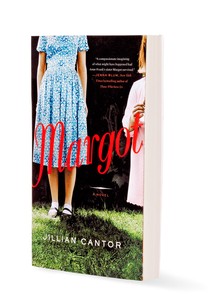In the spring of 1959, quiet Margie Franklin is a secretary at a law firm. But this unassuming woman harbors a secret that could threaten her newly established life: Her true identity is Margot Frank. In
Margot, Jillian Cantor reimagines the life of Anne Frank's older sister, who, along with Anne and six others, lived in an attic for two years, hiding from the Nazis. Margot also kept a diary (though it was never found), and it is from that real-life thread that Cantor derives the inspiration for her story. In this inventive narrative, after narrowly escaping death, Margot migrates to the City of Brotherly Love, where she changes her name out of fear of being outed as a Jew. She hides within her new persona the way she once concealed herself in the annex, whispering prayers on the Sabbath and always wearing a long-sleeved sweater "so the dark ink on my forearm remains hidden, unseen." Cantor's "what if" story combines historical fiction with mounting suspense and romance, but above all, it is an ode to the adoration and competition between sisters who were once so close that Margie feels "something is missing from me, something that feels like the phantom weight of a stolen limb or internal organ...." Despite her survivor guilt, she knows she must seize her second chance and live a life worthy of those who never got one.


